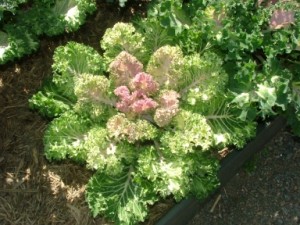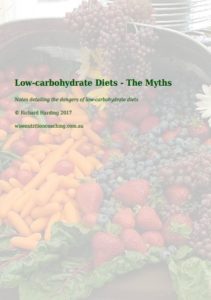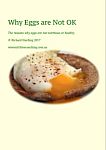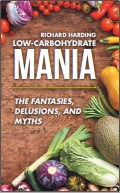Kale – a super green

Dark green leafy cabbage family vegetables such as broccoli, Brussel sprouts and kale are a rich source of nutrients. It is frequently recommended that people taking anti-coagulants (“blood-thinning agents”) such as warfarin, refrain from eating leafy greens as it inhibits the anti- coagulant action. Instead of removing the food items that can help you recover your health, it is important that you eat a consistent amount of leafy greens so that the medication can be monitored. So, speak to your doctor.
It is possible to eat too much kale (and leafy greens). Goitrogenic compounds in brassicas interfere with thyroid function, especially in people with low iodine intake. They can block the thyroid’s uptake of iodine, so you do need to ensure that you have an adequate amount of iodine in your diet.
Different brassicas have different amounts of goitrogenic compounds and cooking deactivates these compounds.
Oxalates are also present in leafy greens which can also impact health. Cooking reduces oxalate content of foods.
In the New England Journal of Medicine May 2010, the paper Myxedema coma induced by ingestion of raw bok choy 1 described a women who was admitted to hospital in a coma from eating 1.5 kg of raw bok choy daily. Definitely too much raw leafy greens.
So be a little cautious when consuming large amounts of raw leafy greens.
Kale has an extensive array of vitamins and minerals including vitamin K, vitamin A, vitamin C, B vitamins, vitamin E, calcium, iron, potassium, magnesium, and copper.
Kale is also rich in proteins and moderately rich in alpha- linolenic acid (ALA – an essential omega 3 fatty acid).
| Calcium | ||
| Kale | 2.7 mg/KCal | |
| Milk | 1.853 mg/KCal | |
| Cheddar Cheese | 1.789 mg/KCal | |
| Iron | ||
| Kale | 0.034 mg/KCal | |
| Eggs | 0.012 mg/KCal | |
| Beef | 0.011 mg/KCal | |
| Protein | ||
| Eggs | 0.088 g/KCal | |
| Kale | 0.066 g/KCal | |
| Cheddar Cheese | 0.062 g/KCal |
Last updated on Tuesday 6 December 2022 at 03:04 by administrators






